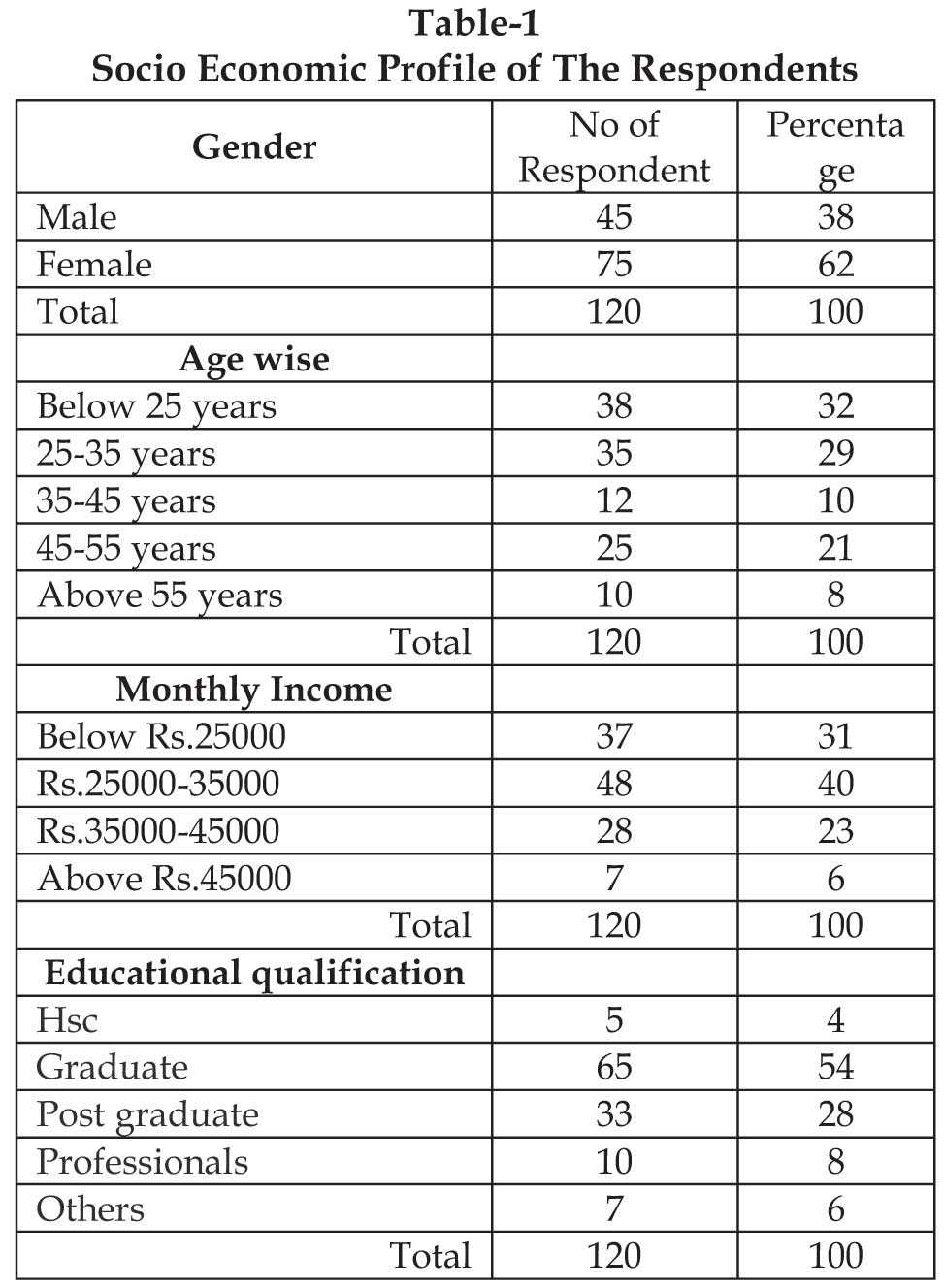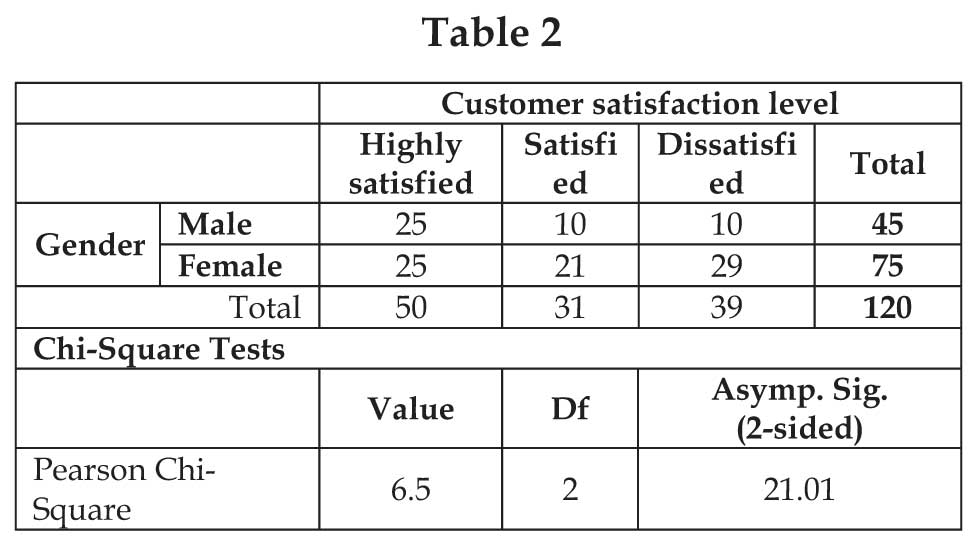Subscribe now to get notified about IU Jharkhand journal updates!
A Study on Customer Satisfaction towards Online Shopping in Tirunelveli district
Abstract :
The study tries to examine customer satisfaction towards online shopping users in Tirunelveli city. Online shopping offers the best price, good products and completely easy shopping. The success of any e-tailor company in India is contingent upon its popularity. Online shopping has gained importance in the modern business environment. The development of online shopping has opened the door of a chance to provide a competitive advantage over firms. Online shopping has grown in popularity over the years mainly as people find it suitable for the comfort of their home or workplace. In the recent past, the web keeps a precious place within economic activities. Now-a-days individuals display their interest on the web.
Keywords :
e-tailor company, Customer Satisfaction, Online Shopping, economic activities, product online.INTRODUCTION
The World Wide Web has grown incredibly since its inception in 1990 and by 1991 it was opened for marketable use. Recently at present time online shopping is the new trend of shopping in Tiruneveli that is used to refer to computer- based- shopping or Eshopping same like internet banking. Online shopping is the process whereby shoppers directly buy goods, services etc. from a seller interactively in real time without an intermediate facility over the internet. The satisfactions a feeling which is a significance of the measuring process which informs what has been received against what was expected, including the buying decision and needs associated with the purchase. Internet has been constantly gaining significance nowadays. The number of people pr e f e r r ing int e rne t for the i r day to day accomplishments also keeps on increasing. People today are doing domestic works online. Online customers must have contact to the internet to buy goods form online. People can look at these websites of online stores and buying products in luxury form home. Unsatisfactory recently, the regulars were mainly visiting online to reserve hotel rooms, buy air, rail or movie tickets for buying books and electronic gadgets, but now more and more offline product like apparels for all sectors, make-ups, accessories, shoes and consumer durables are now being purchased online.
Objectives:
- To analysis the satisfaction level of consumer towards the online shopping.
- To analysis features that consumers expect at an online shopping.
- To analysis the socio economic background of customer.
- To analyses the satisfaction levels of the customers of the selected online products.
- To identify the difficult in the online shopping.
Review of literature:
- Kim and Park (2005), using U.S. samples suggests that their positive attitudes as well as willingness to search for pre-purchase information leads to a strong likelihood that they will buy online. Online shoppers, are required to have computer skills in order to use the Internet for shopping. Hence, those who are not comfortable with using the computer, will likely do their shopping at the traditional store, modern shop, or discount store (Monsuwe, 2004) because it will be faster shopping there than in the Internet shop.
- Goldsmith and Flynn (2004), state that the home catalog is another traditional selling channel where people can shop athome because of the varieties of products offered in the catalog. They can order through the phone or by mail. It is convenient except that they are not able to touch and feel products before purchasing Sultan and Henrichs (2000) in his study concluded that the consumer's willingness to and preference for adopting the Internet as his or her shopping medium was also positively related to income, household size, and innovativeness.
- Vijay, Sai. T. &Balaji, M. S. (May 2009), revealed that Consumers, all over the world, are increasingly shifting from the crowded stores to the one-click online shopping format. However, in spite of the convenience offered, online shopping is far from being the most preferred form of shopping in India. A survey among 150 internet users, including both users and non-users of online shopping, was carried out to understand why some purchase online while others do not. The results suggested that convenience and saving of time drive Indian consumers to shop online; while security and privacy concerns dissuade them from doing so.
- Rashant Singh (2014), in his study on Consumer's Buying Behaviour Towards Online Shopping, The main aim of study was to examine and analyze the consumer's buying behavior pattern towards online shopping in lucknow. The research is based on both primary data and secondary data. The total sample sizes of 40 were collected through questionnaire by using convenient sampling method, the outcome of the study is most number of users are happy on online shopping and mainly interested in buying online apparels.
Meaning of customer satisfaction:
Customer satisfaction is the degree of how the needs and responses are team up and transported to excel customer anticipation. Customer satisfaction is a part of customer's knowledge that disclosures a supplier's performance on customer's anticipation. Customer satisfaction is the complete essence of the imprint about the dealer by the customers. This impress which a customer makes concerningprovider is the sum total of all the process he goes through, right from shared supplier before doing any marketing to post sending options and services and managing queries or grievances post-delivery. During this process the customer comes across working situation of various sections and the type of approaches involved in the association. This helps the customer to make strong opinion about the supplier which lastlymarks in satisfaction or dissatisfaction.
Methodology:
Primary data:
Primary data was collected from the respondents through systematically prepared questionnaire through structured interview methods.
Secondary data:
The main source of information for secondary data was collected from old records and the websites books, journals, newspaper etc.
Analysis and Interpretation

Source: Primary data
Table - 1 shows that out of 120 respondents 62 percentage of the respondents are female. 32 percentage of the respondents are under age group Below 25 years. 40 percentages of the respondents are under monthly income of Rs 25000-35000. 54 percentages of the respondents are Graduate.
Chi-Square Analysis:
Gender of the respondents and quality of work life
H01 – There is no significant association between 0 gender of the respondents and level of customer satisfaction.

The value of chi-square is 6.5 (d.f = 2) and associated significant value is 21.01(which is greater than 0.05). Therefore, the null hypothesis is rejected. Hence it is concluded that there is significant association between gender of the respondents and level of customer satisfaction. It's because of the respondents' variation of the level of customer satisfaction which varies according to gender wise. The above cross table clearly explained that male and female respondents 'level of customer satisfaction not same'.

Source: Computed data
From the above table, it was observed that the calculated value is greater than table value the result of 5% level of significance. Hence there is significance difference between before satisfaction level and after satisfaction level in a satisfaction level are differ. Hence the null hypothesis is rejected.
Findings:
The findings of the present revealed the following
- 62 percentage of the respondents are female.
- 32 percentage of the respondents were under age group of below 25 years.
- 40 percentage of the respondents were laid on between Rs25000-35000 monthly income.
- 54percentage of the respondents are graduate.
- There is significant association between gender of the respondents and level of customer satisfaction.
Suggestion
- One the major drawbacks that the respondents have felt are no proper returning policy to the product.
- After getting opinion from the respondent if the above said problem occurs, then they should be guided in a proper way to return the product.
- This will create a good website reputation and repurchasing power of the respondents.
- The respondents face major problems on theft of credit card information, and lack of security on online payments.
- Implementing precautionary steps to solve these problems shall create consumer confidence on online shopping.
- Online shopping follows international market standards and do not know about the local market standard.
- This will helps to increase consumer buying pattern and help the vendors to increase the sale.
Conclusion:
Online shopping is becoming more general day by day with the growth in the usage of World Wide Web known as www. Sympathetic customer's need for online selling has become challenge for marketers. Specifically accepting the consumer's satisfaction towards online shopping, making development in the factors that impact consumers to shop online and working on factors that affect consumers to shop online will help dealers to gain the competitive edge over others. In assumption, having access to online shopping has truly transformed and unfair our society as a whole. This use of knowledge has opened new doors and chances that enable for a more convenient existence today. Variety, quick service and reduced prices were three significant ways in which online shopping subjective people from all over the world. However, this concept of online shopping led to the opportunities of fraud and privacy conflicts. Unluckily, it has shown that it is possible for criminals to operate the system and access personal material. Luckily, today with the latest features of knowledge, events are being taken in order to stop hackers and criminals from inappropriately opening private databases.
References:
- S. Mohanapriya and D. Anusuya, (2014), “A Study on Customer Preferences and Satisfaction towards Selected Online Websites with Speical Reference to Coimbatore City,”Volume.3, Issue.11, November., Paripex - Indian Journal of Research.
- Sanjeev Kumar and Savita Maan (2014), Status and Scope of Online Shopping: An Interactive Analysis through Literature Review, Vol. 2, Issue 12, December. International Journal of Advance Research in Computer Science and Management Studies.
- Prashant Singh (2014), Consumer's buying behavior towards online shopping; Vol.2, Issue13, January., national monthly referred journal of research in commerce and management.
- Wang, C L, Ye, L R Zhang Y and Nguyen D. D, (2005), “Subscription to fee-based online services: vol. 6, what makes consumer pay for online content?” Journal of Electronic Commerce Research.
ww.wikipedia.com
wwww.yourlibraryarticle.com
www.reserachgate.com
